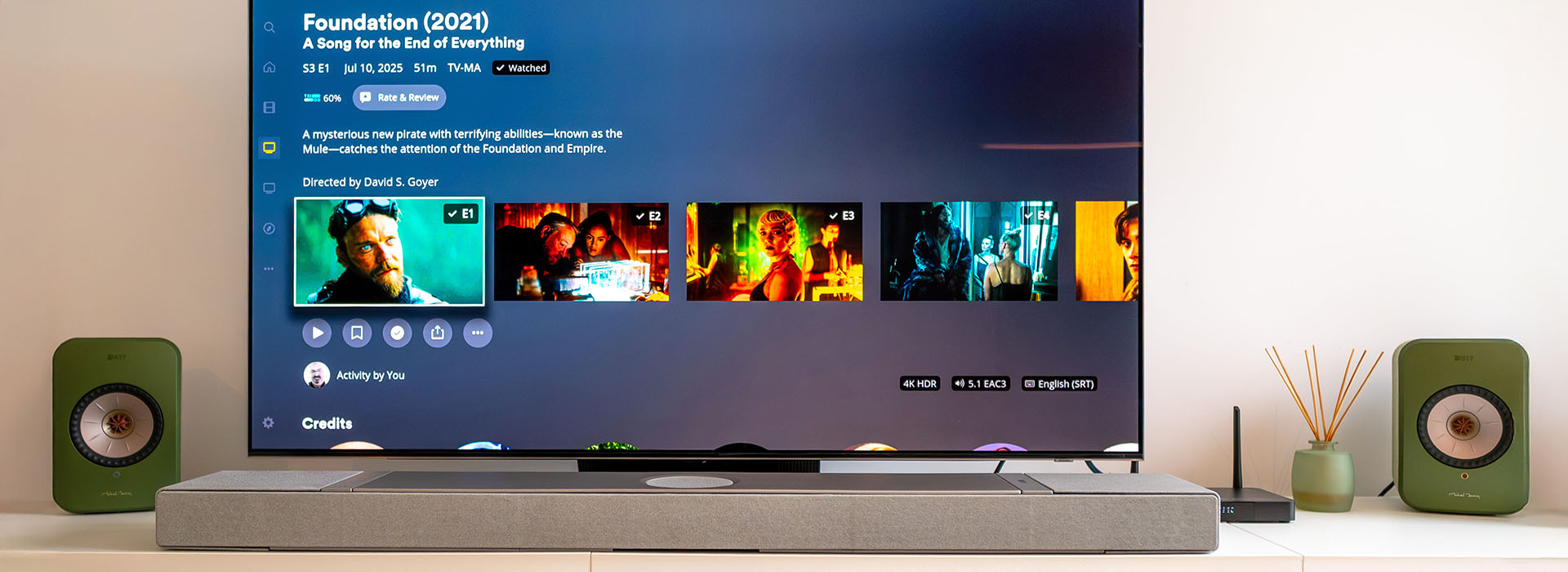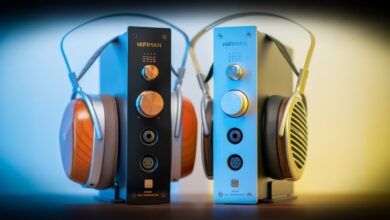KEF XIO Soundbar – a bold move into premium home theatre convenience
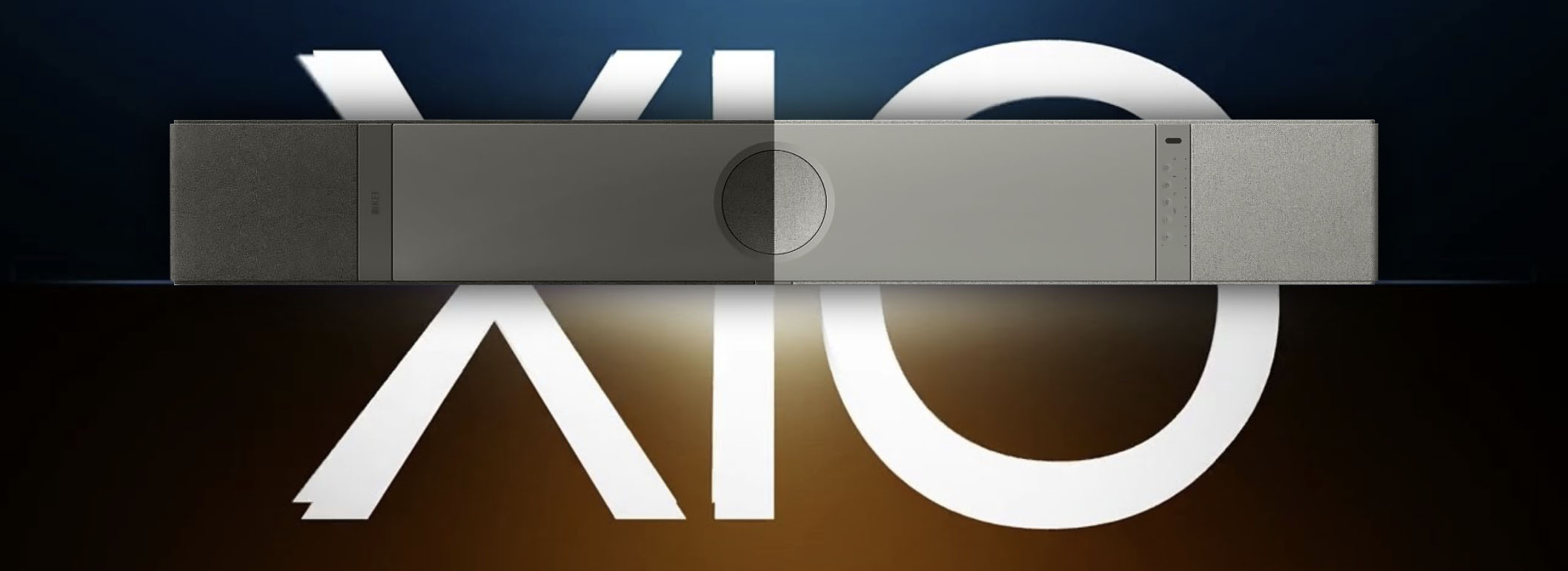
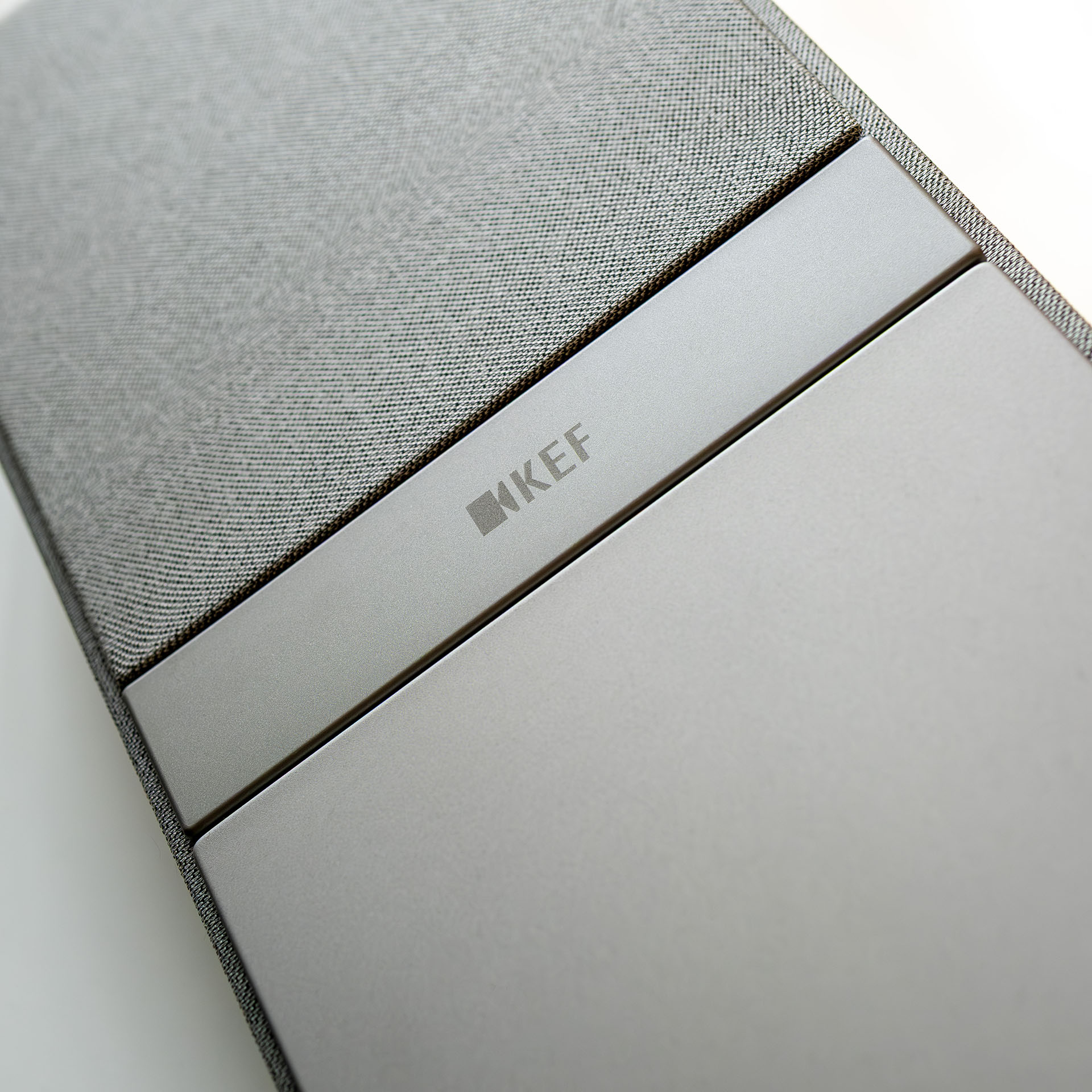
Highest 2 Lowest
Starting this new review, I am still hooked on the latest movie I watched, enjoying the newest product from KEF, their first step into the world of TV soundbars. Well, KEF is definitely not new to the home theatre area of our homes and beyond; their extensive portfolio of speakers, wall-mounted installations, and in-wall drivers has been an established presence for many years. Somehow, their latest release — the KEF XIO soundbar — is an exercise in engineering that brings their acclaimed home theatre line of speakers to a more accessible, compact, and consumer-friendly line. The idea will evolve even further; you will see why later, which will add considerable confidence to the feature of this new product. As you can see, I am trying to tell you everything at once, but that is not possible. Let’s start with the beginning.
Marking a 20-year reunion with auteur and mentor Spike Lee, Denzel Washington‘s latest film is a contemporary reinterpretation of Kurosawa’s classic “High and Low.” In many ways, “Highest 2 Lowest” feels like a full-circle moment. It is for Lee, the acclaimed director who was inspired by Akira Kurosawa when he made his first feature all those decades ago. It is also for Washington, whose career was significantly boosted after collaborating with Lee. Having already won an Academy Award for Best Supporting Actor in “Glory,” he was two years away from a game-changing role in Lee’s “Malcolm X,” which earned him a Best Actor nomination and solidified his status as a leading man.
The Highest 2 Lowest synopsis: “David King is a prominent NYC music producer about to make a fortune selling his label, but has second thoughts about giving up his dream, working behind the scenes to sabotage the deal, and risking everything to do so. When a kidnapper calls to tell him he has his son and demands $17.5 million, King’s world is thrown into chaos, with mounting financial and moral dilemmas and unbearable pressure.”
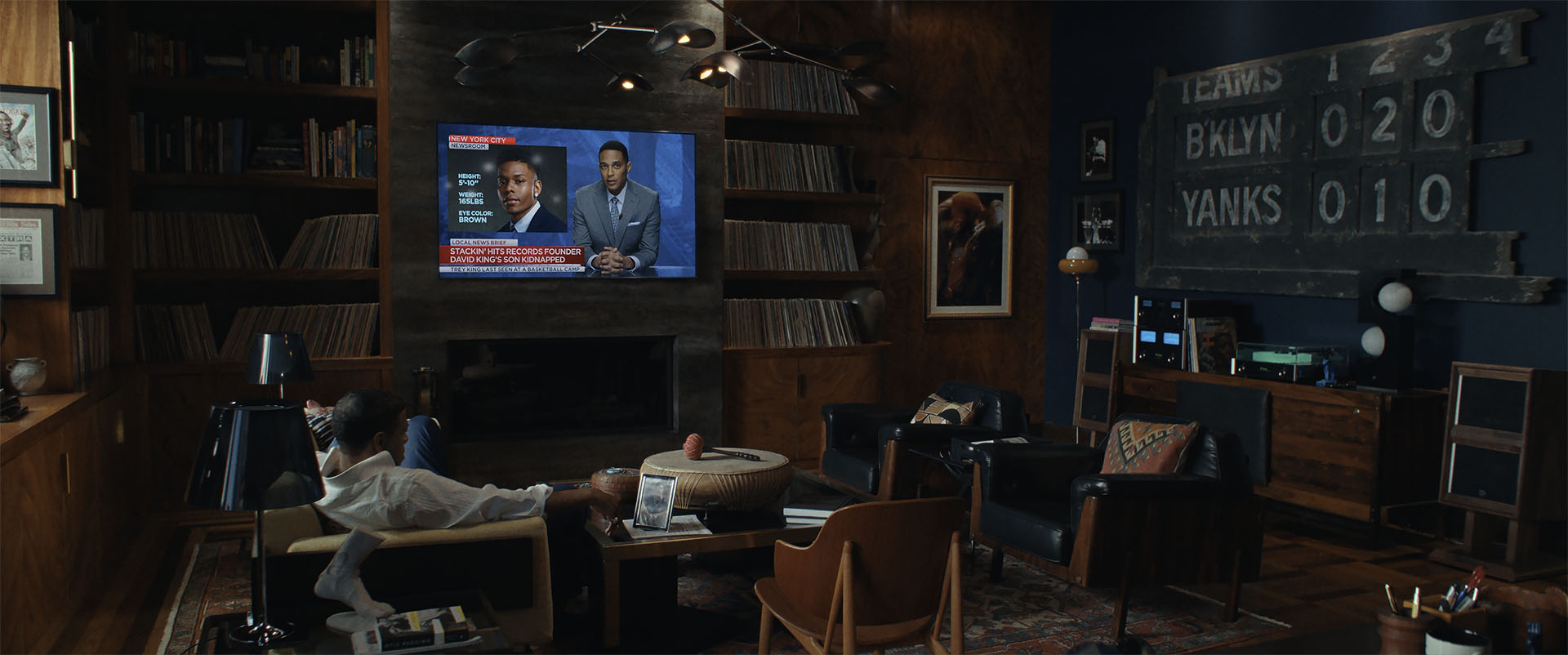
But it is not the movie itself that I want to tell you about. I was struck several times by many details outside of the plot. First, Denzel Washington is 70 years old, and his appearance is just stunning, fueled by vigor and an incredible physical presence, an absolute force of nature. Then there is Spike Lee playing jazz, and he’s performing it with his most trusted lead in Washington, creating a distinctive rhythm and a musical majesty that’s hard not to appreciate and get swept up in. Lastly, but certainly not least, there are very slow B-roll shots of David King’s apartment overlooking New York City. “The King” is a music mogul from the present day, known for having “the best ears” in the industry, a phrase repeated more than once throughout the story. The camera often lingers on the most stunning modern works of art by Jean-Michel Basquiat, Kehinde Wiley, Deborah Roberts, Gordon Parks, Henry Taylor, and others, decorating the luxury home of the music tycoon played by Washington. The film draws inspiration from Lee’s personal art collection, especially after it was showcased at the Brooklyn Museum in 2023. Reproductions are made of several Basquiats, including Horn Players (1983) and Now’s the Time (1985), Tim Okamura’s 1993 portrait of Toni Morrison, and pieces from Andy Warhol’s “Muhammed Ali” series from 1973. Jaw-dropping 🙂
The penthouse is also decorated with historic photographs, such as Parks’ image of Malcom X and the iconic image of Marvin Gaye at the piano in a recording studio, shot by Jim Britt.
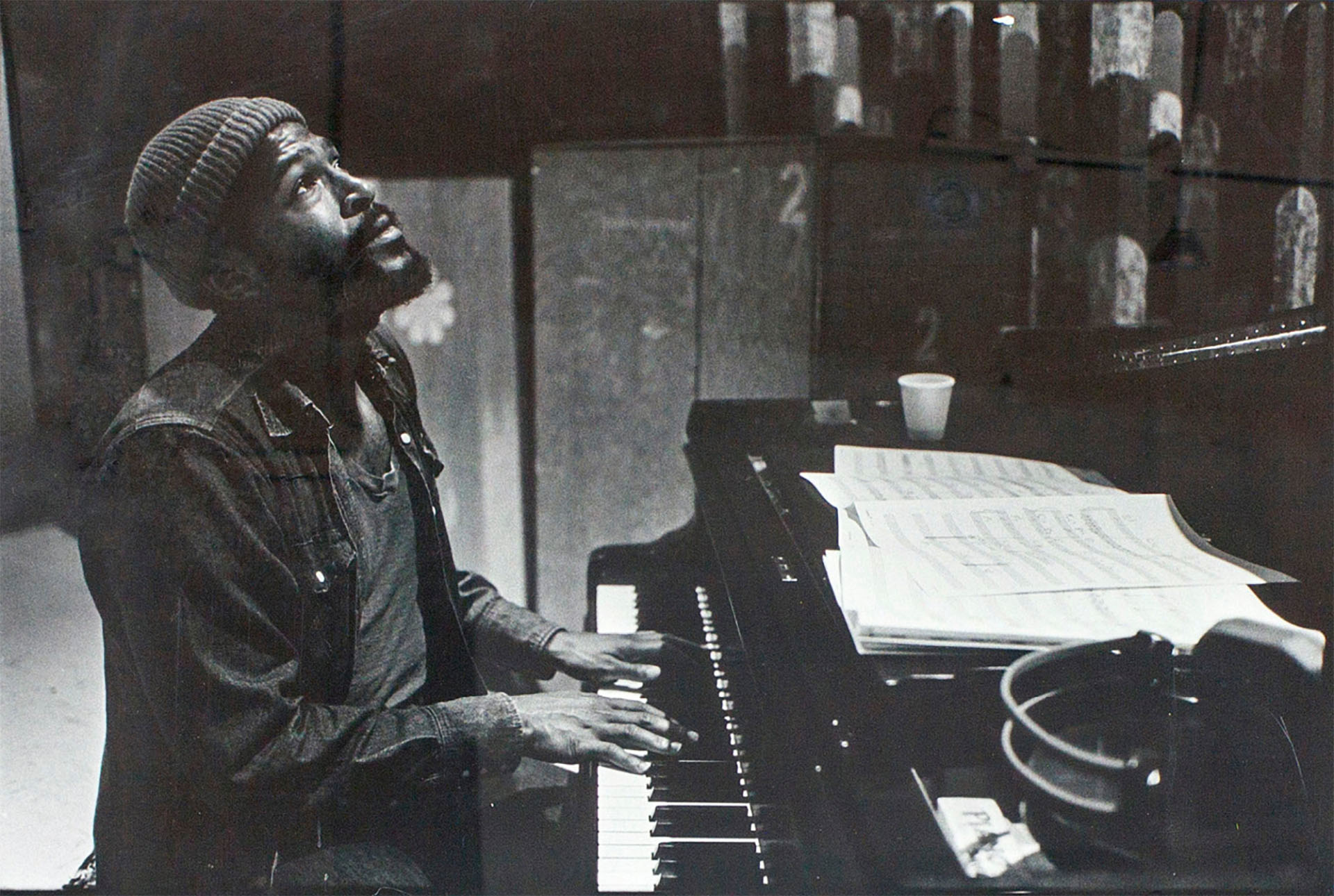
And, on the opposite side of all these lavish art pieces, a compact hi-fi system is tucked away in the corner of the room. I could see a McIntosh preamplifier and integrated amplifier, both connected to the same McIntosh turntable, paired with vintage speakers. A little disappointing. But that sparked some understanding and confirmations. I could imagine the subject of this story, as I watched it while viewing the movie, fitting perfectly into that interior without any extra bells and whistles — the perfect match. And it makes total sense, as “The King” will have a complete recording studio in his record company’s offices in the middle of New York. Here, in this stunning mid-century interior, minimalism was key, with a textural and organic touch that still delivered high-quality sound. As everything in that space communicates excellence and refined taste, I can perfectly envision the KEF XIO in those surroundings.
This movie is not about spectacular audio special effects, but a lot of music, and a solid playlist can be built from it. There is deep grunge and bass rumble in some passages that will reveal the performance of KEF XIO. The Fergus McCreadie Trio album, part of the movie playlist Tidal/Qobuz, will test the sense of scale for the piano and depict the recording’s landscape. I had high expectations for KEF’s pure musical reproduction and premium sound quality, and I was not disappointed.
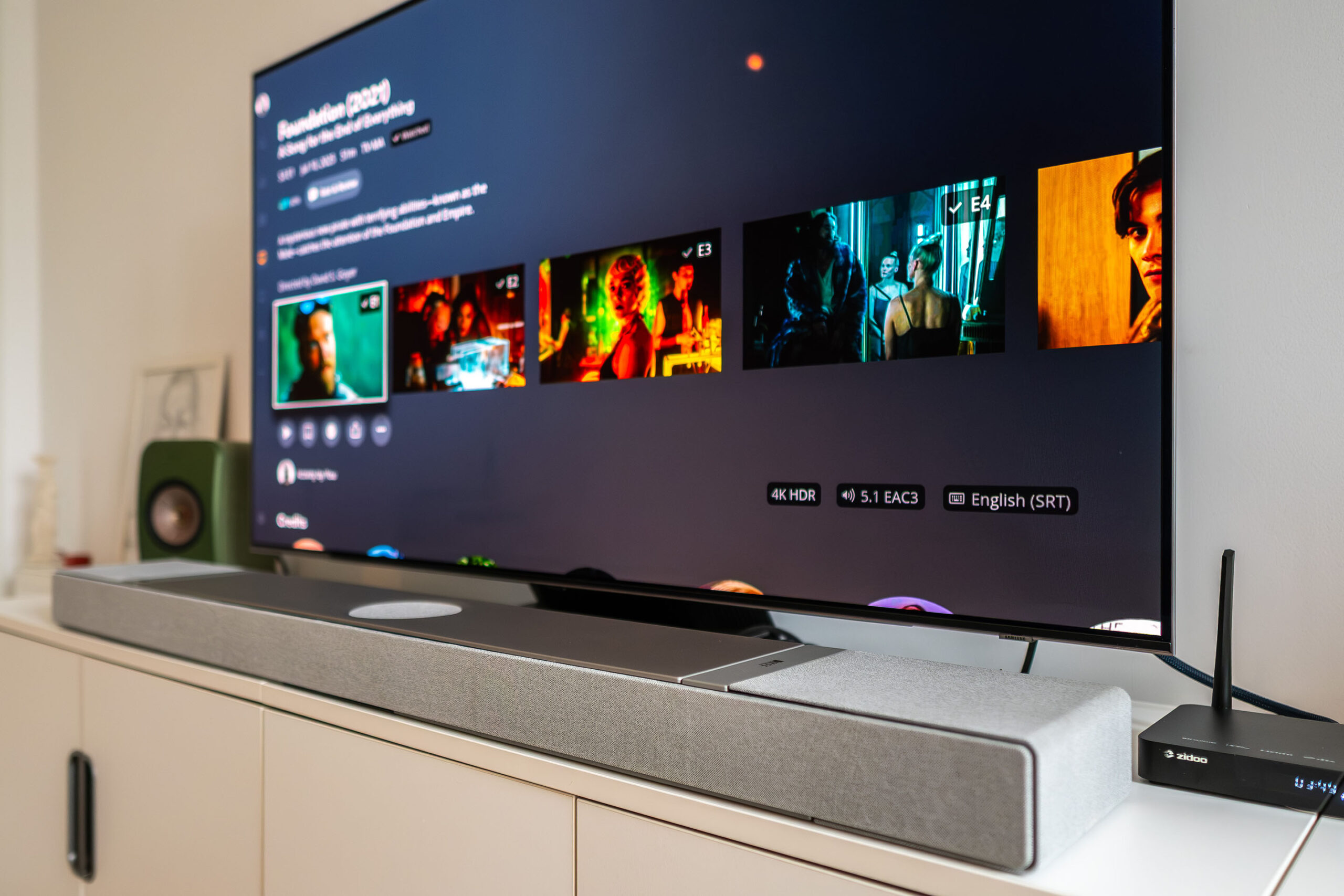
XIO is a premium product, a little more than just a soundbar, aiming for finesse in musical reproduction, and not just delivering impact in movies. It boasts a minimalist and comfortable appearance, complementing any modern interior, regardless of how posh and pretentious it may be. I can see it on the wooden table below the “Horn Players” by Basquiat? Absolutely. Or under the TV in the King’s office? Definitely. KEF’s expertise in architectural speakers is clearly evident with XIO. If you want to learn more about the outstanding declaration of KEF’s exceptional design, sound quality, and seamless integration into modern architecture, follow us on our visit to the KEF Music Gallery in London from last year, which we consider a truly cultural and immersive experience.
Here is just a short excerpt from our experience:
“The Music Gallery truly stands out as a unique collaborative space. It hosts various events throughout the year, including immersive sound and music sessions, film screenings, art exhibitions, discussions, and workshops. This diversity has inspired me to reflect on the successful Apple concept stores worldwide. However, KEF has surpassed those experiences by establishing a genuine hub for artists and creators to engage with tools of the highest technical quality. It is a magnificent achievement, not just from a technical perspective, but also from a cultural standpoint, as they succeeded in incorporating art into the inner core and creating lasting experiences around it. This is not a straightforward concept store to showcase products. It is primarily an event hub, a place to experience sound at the highest quality and to experiment with products that are not just price-conscious (most of them) but well-suited for any modern home.”
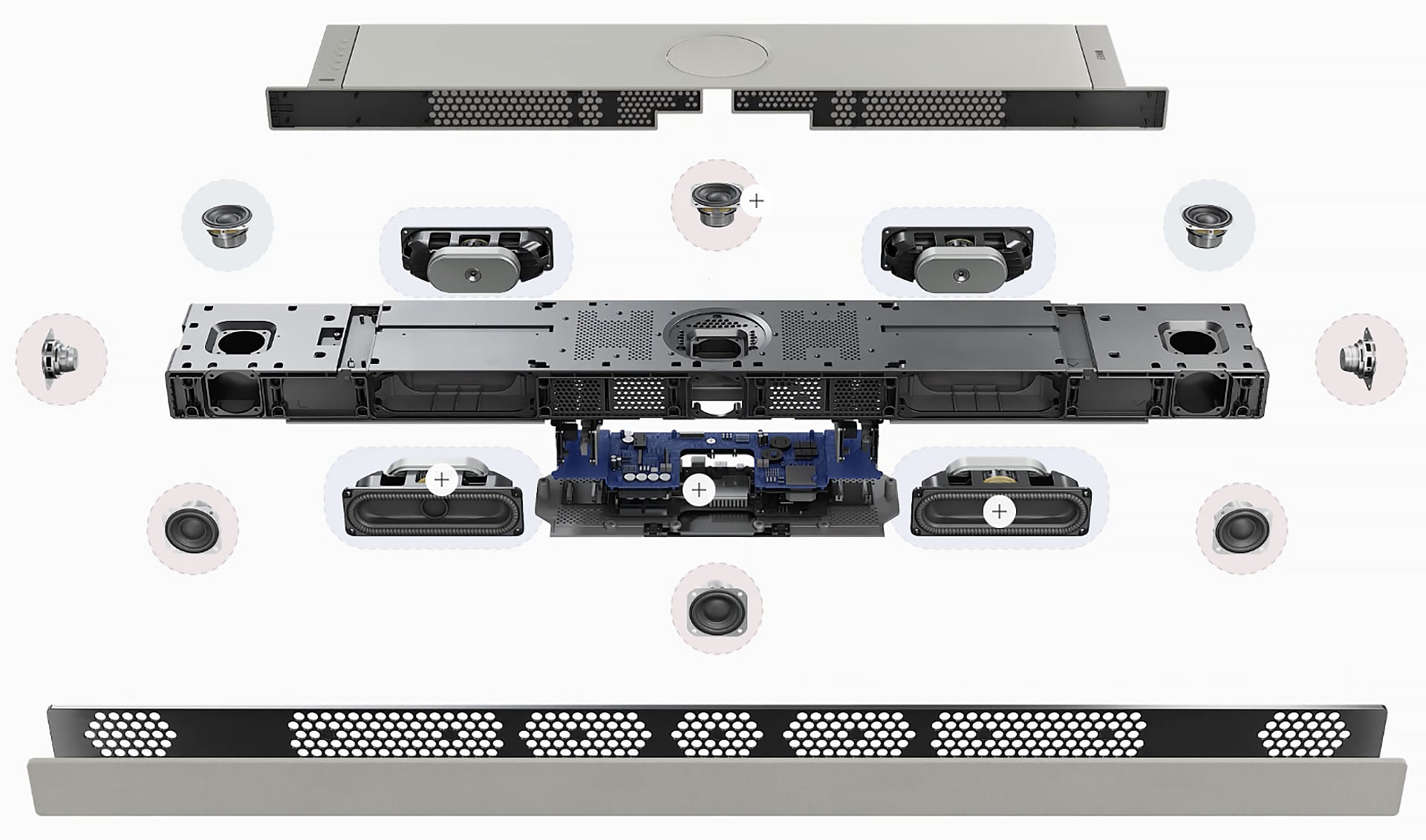
Technical Details
As is always the case with highly polished products, there is so much more than meets the eye. The high level of sophistication is hidden inside, treating the user with simplicity and ease of use. XIO is a fairly large soundbar, measuring 70 x 1210 x 165 mm, and it’s not light, weighing 10.5 Kg. It can sit on the credenza below the TV or, even better, if the TV is mounted on the wall, the soundbar can be positioned underneath, also fixed to the wall.
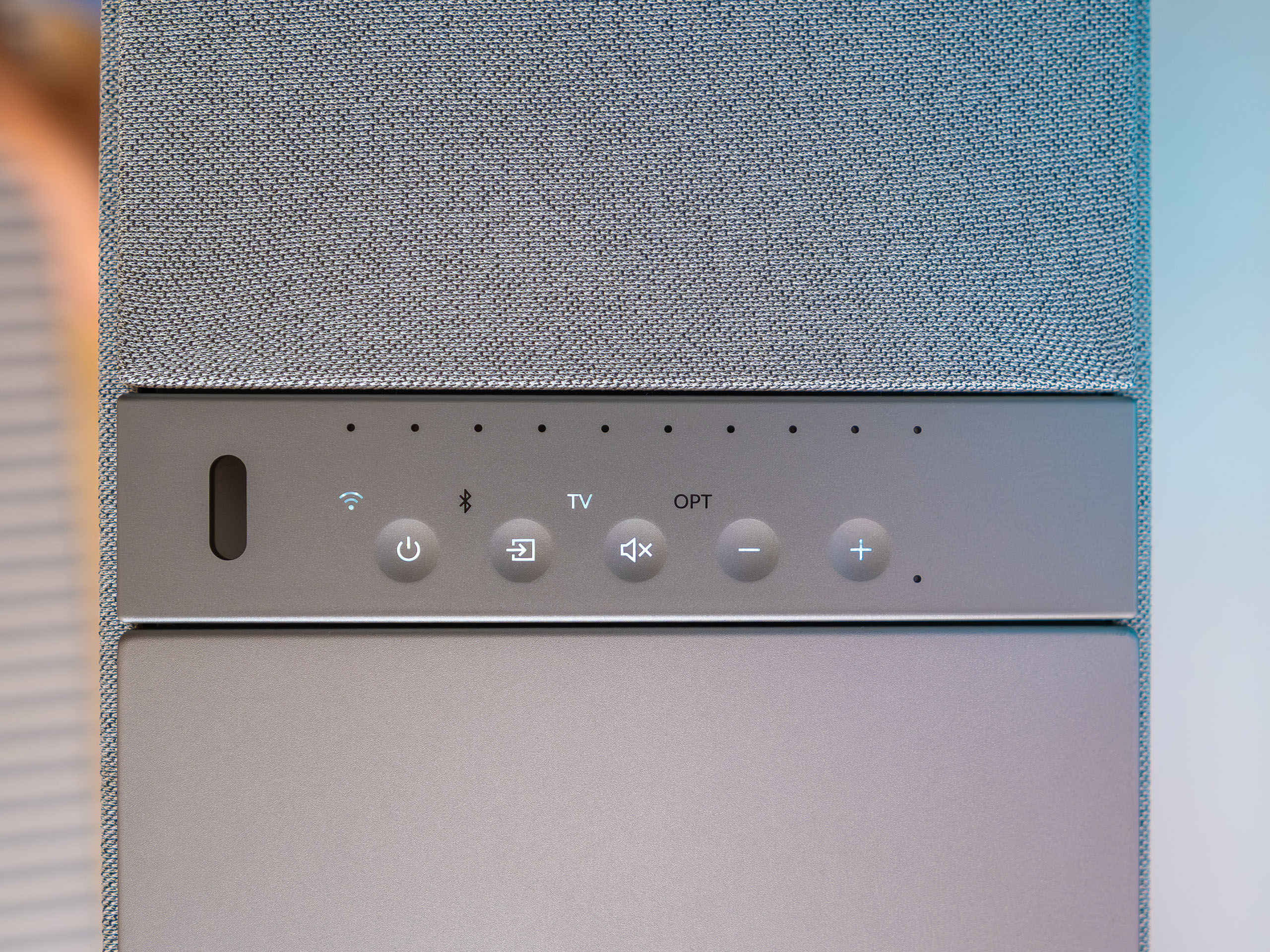
The impressive part follows – not less than five Uni-Q MX drivers, two full-range drivers, and four low-frequency, powerful drivers, all of which are powered by 12 Class D amplifiers, for a total instantaneous peak power of 820 W, all of it directed by a bunch of powerful technologies supported by DSP processing, with 34Hz to 20kHz frequency range:
- Dolby Atmos & DTS:X – Immersive spatial audio with precise sound positioning. XIO is a 5.1.2 sound system (5 main channels, 1 subwoofer, and 2 surrounds).
- Uni-Q MX – where the MX attribute comes from the miniature version of the well-known Uni-Q coaxial drivers technology.
- VECO – four P185 low-frequency drivers augmented with Velocity Control Technology (VECO).
- Intelligent Placement Technology (IPT) – ensures consistent performance by detecting nearby objects to understand the surrounding acoustics.
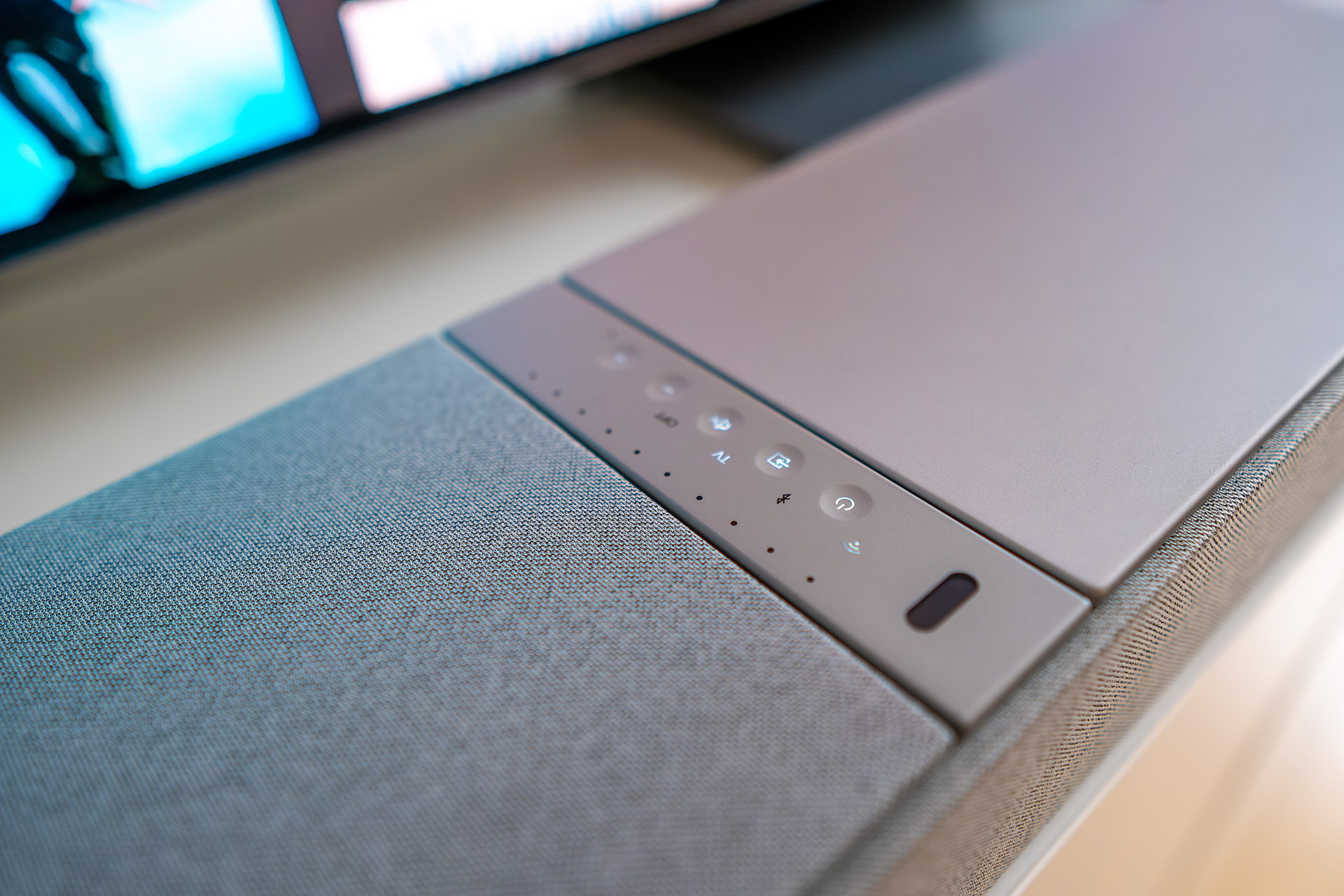
XIO will stream almost anything, supporting all major streaming services, including Spotify, TIDAL, Amazon Music, Deezer, and Qobuz. Additionally, it is compatible with a wide range of audio formats, such as PCM files, Dolby Atmos Music, and Sony 360 Reality Audio. The maximum supported resolutions are: 192 kHz/24-bit on HDMI eARC, network streaming up to 384 kHz/24-bit, and optical to 96 kHz/24-bit. Wi-Fi is also included, along with up to 6G wireless compatibility, and wired RJ45 Ethernet.
All these details are mostly transparent to the user, as they simply work. The required configurability will be managed through the excellent KEF Connect application, accessible from the comfort of your mobile phone.
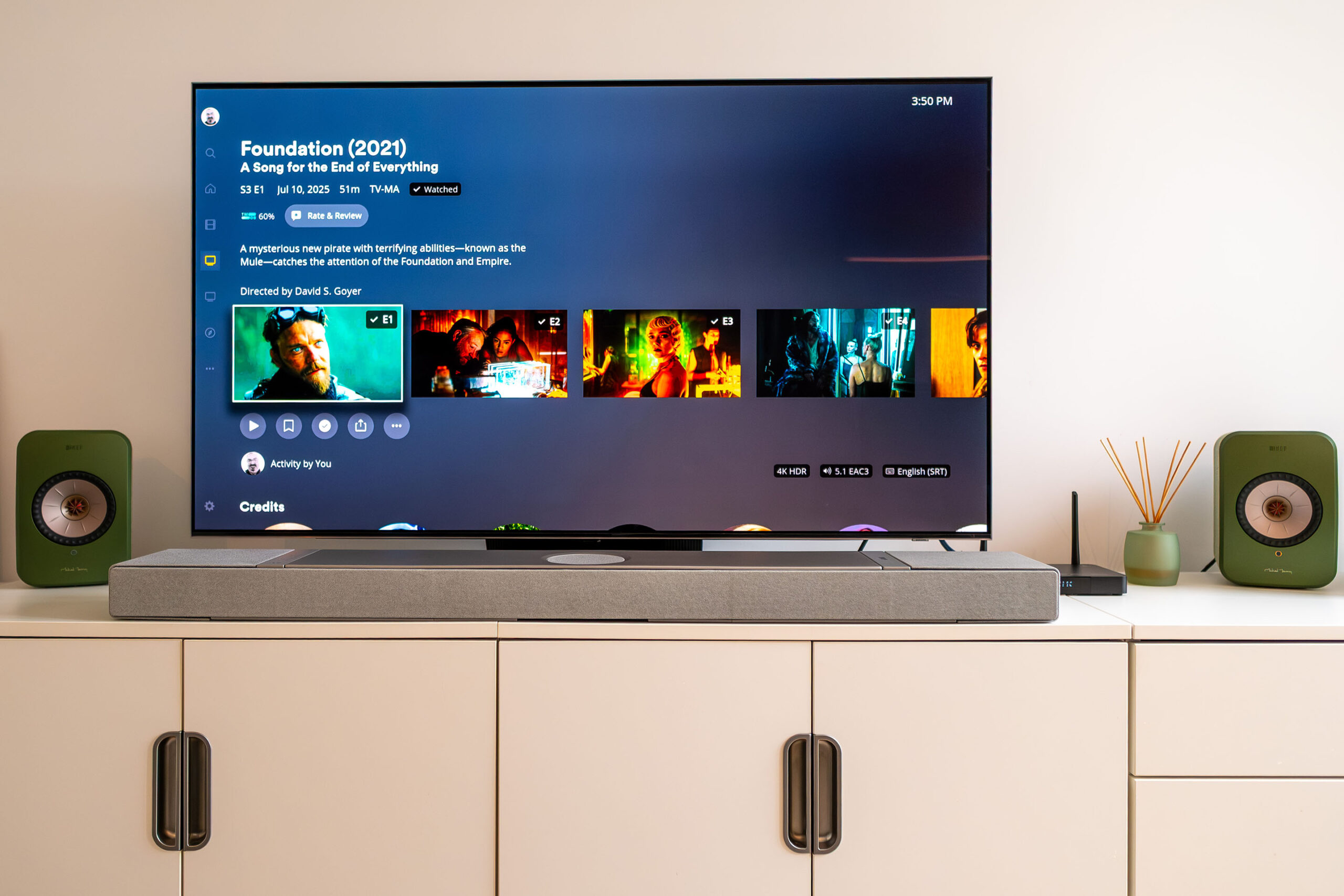
Installation
XIO comes in a really long and heavy box, but once seated on the floor in front of the TV, there was no problem unboxing it and placing it on the same stand as the TV. My daily “soundbar,” consisting of the excellent KEF LSX II, had to take a step back, as you will see in the pictures, but the subwoofer used in my setup remained in place and was connected to the XIO. I did not have one of the KEF subwoofers at hand, but I strongly recommend one, such as the KEF KC62 or the newest and most powerful KC92, as the KEF Connect will be able to connect wirelessly and has the complete profile for it.
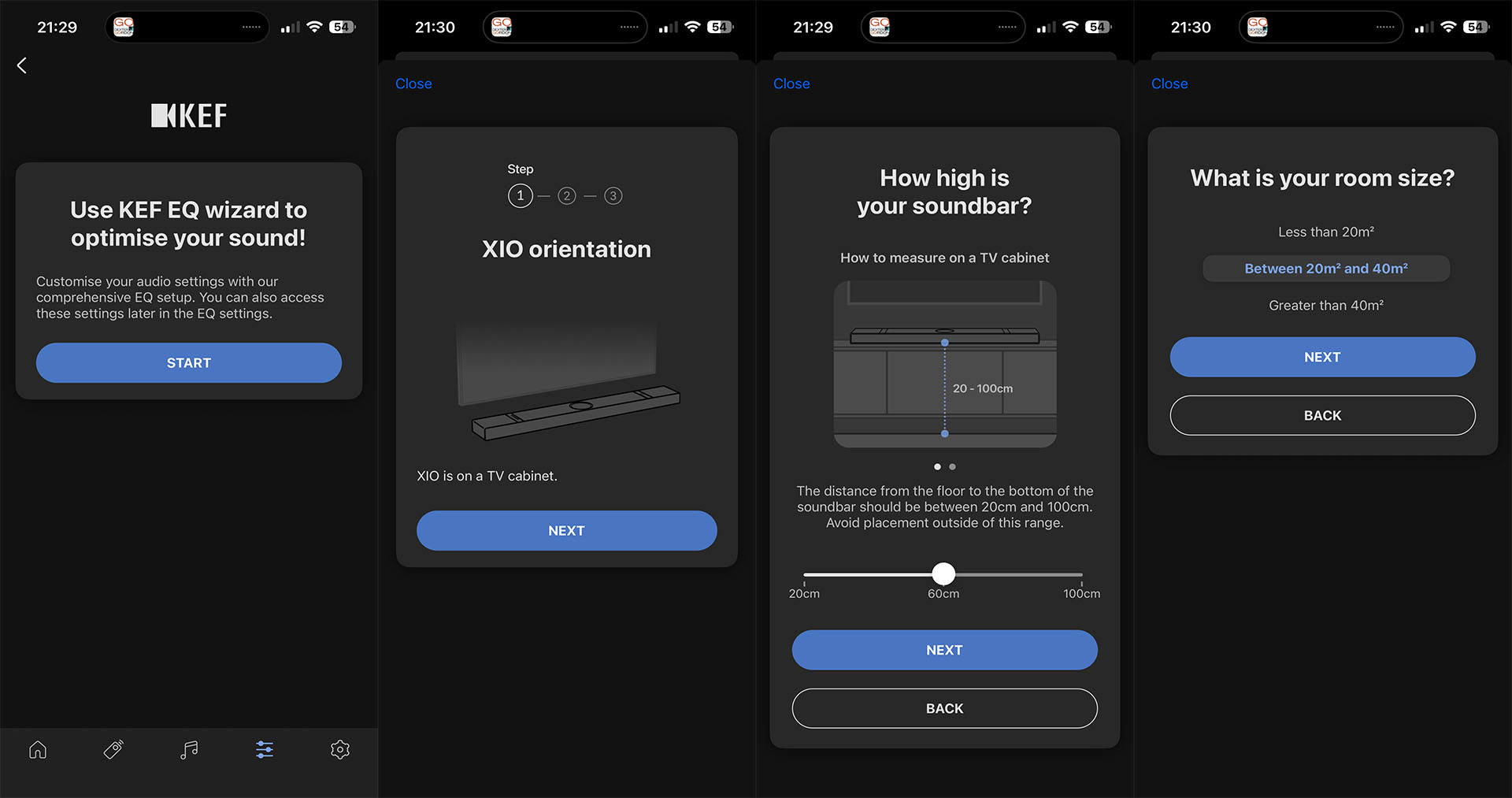
Once everything is connected—power cord, Ethernet for the network, HDMI cable to the TV, and the subwoofer to the dedicated output — it’s time to fire up the KEF Connect application. The XIO was recognised immediately, and the KEF EQ Wizard was offered to customize and tailor the in-room frequency response. Everything went smoothly, no problem here; the only thing I did not quite understand was the completely silent sweep performed by the wizard. I expected a full-frequency sound, and instead, I could hear nothing… I did it again, thinking that maybe only the low frequency would be considered, and I listened more attentively—nothing, dead silent. So, the room calibration is occurring at subsonic frequencies? I have no idea how the room calibration is happening and what the final effect will be.
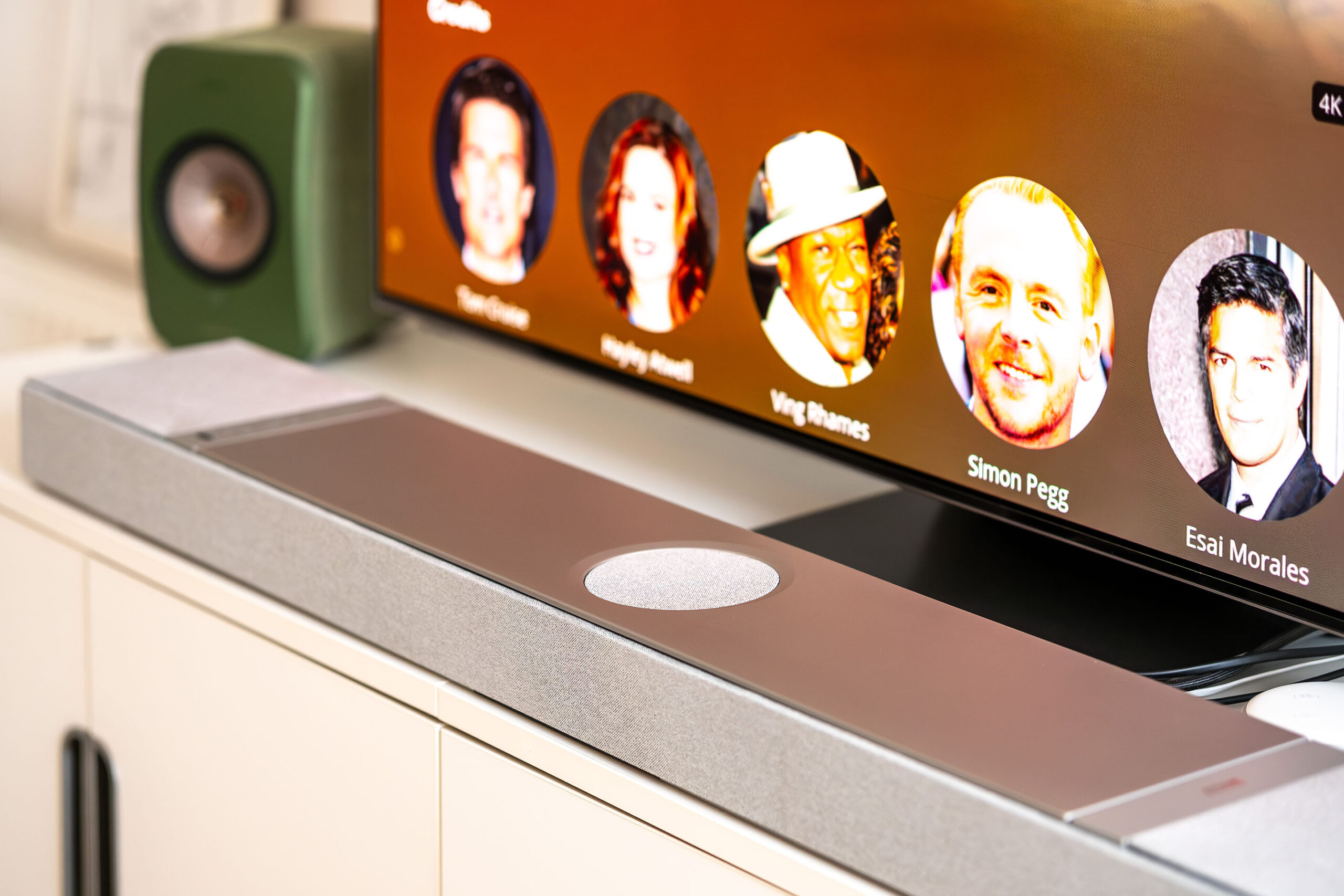
The application will provide all the other configuration parameters that we are used to tackle for the rest of their active speakers – height, distance to front wall, if the speakers are located on stands or not (in the soundbar case, the two positioning options: on the wall or on the shelf), room size, and how much bass the subwoofer shall handle. As usual, this is working really well in the KEF Connect app. In under 5 minutes, I was ready to begin my first movie experience with the XIO.
Pressing Play, my first impression was of much bigger sound compared to my previous setup. A much taller sound wall impressed me, but it also showed that KEF Connect and, presumably, the room calibration were very conservative with the bass response. I corrected this within the app, allowing the subwoofer to handle a much higher volume for the low frequencies and adjusting my room size to a slightly larger setting. This way, the soundbar unleashed a more dynamic and impactful sound, which can be too much in the long run, but for assessing the new sound, it was more than welcome.

Mission: Impossible (made possible)
I have to come clean: when I reviewed the KEF LSX II active bookshelves, I named the review itself “the best Soundbar you can buy as a music lover”. Well… life has the capacity to show us that definitive answers usually do not survive the test of time. I was not entirely wrong, but I am not fully correct, now with the new KEF XIO out in the wild. Perhaps, strictly for music, my KEF LSX II still retains supremacy in soundstage precision and coherence. However, for movies, the battle is lost now, as the XIO will play much louder, taller, and more dynamically. The sense of immersion is significantly enhanced, allowing you to jump into the action in just a matter of seconds. And that was expected.
The special effects from Mission: Impossible – The Final Reckoning are coming alive and with full force. The sound will be much more convincing, depicted on a much larger scale. What I had hoped for was a little more spookiness, with sounds coming from the back or traveling a little more throughout the room. The positioning in space mostly takes place on the front plane and behind the TV, but in my room, it never occurred from the ceiling or the back wall. Perhaps my room was not large enough for the sound to achieve a proper delay, allowing it to trick me into thinking it was coming from a specific position. I read and heard that positioning the soundbar XIO on the wall, below the TV, will help with the reflections from other walls. I did not experiment this way, so I can not elaborate on this. The immersion happened mainly in the grandeur of sound. The sound space was much larger than my stereo setup, with greater depth, so the sound effects still worked, even if not as spectacular as I had expected. It is very challenging to replace a well-designed and properly equipped home theater with well-positioned sound sources. Still, I expected more from that illusion.
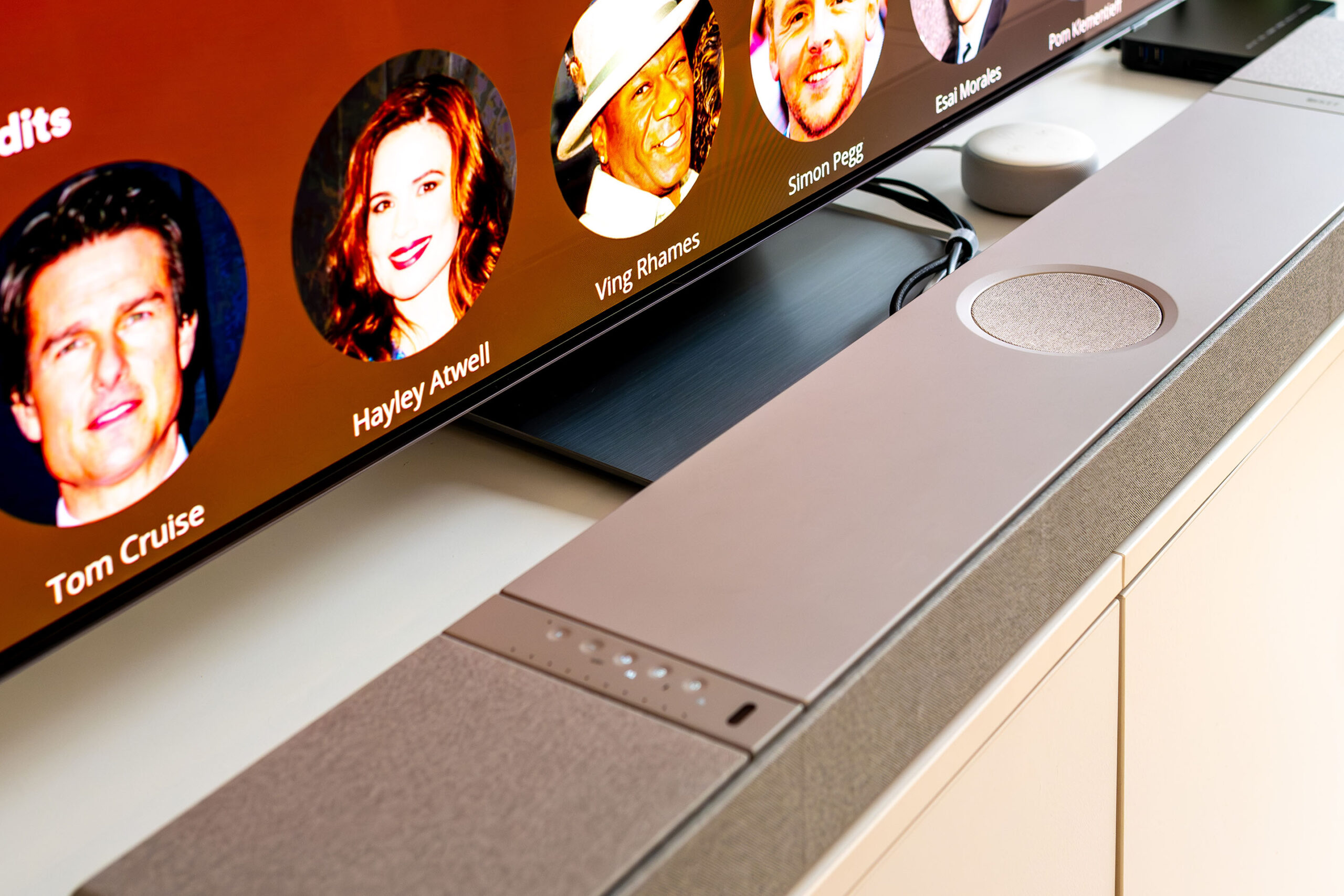
And here I get the idea that this is just the beginning. XIO can be only the first step into a more immersive and spectacular home theatre system. Let’s say someone already owns a stereo active and connected speaker system from KEF (like me). In that case, XIO can become the brain of it all, sending the back signals to those speakers, which are now positioned behind the audience. The room calibration can now tailor the power and frequency filtering for each of the speakers in a new, brilliant ecosystem. Wouldn’t that be wonderful? Any KEF wireless speaker can be integrated into the system and become part of the home theatre sound. You get a new sub? Very good, it will support the terrific impact of the low-frequency response in the room, compensating for the room acoustical problems. Do you have a new set of KEF stereo active speakers, perhaps on stands, for an enhanced musical experience? Good job! Those can also be used to improve the left/right response and a far more precise sound positioning. I really think that this feature will strengthen the ecosystem. The KEF Connect app is already working with any of the KEF set of speakers or subwoofers. In this way, one grows gradually and expands the sound quality of the home theatre system, overcoming the physical limitations imposed by the soundbar. And all that without extra cables, as all speakers can already connect wirelessly to the network and to the soundbar’s central processing unit, the system’s brain. I hope KEF will read this part closely 🙂

F1, the movie
During the time spent with the soundbar, I watched a few of the new 4K releases with Dolby sound and video quality. I enjoyed the new setup a lot, and with all the already named limitations, it has started to grow on me. It was clearly superior to my previous setup.
I remember being part of an unforgettable presentation last year at the Dolby Center in London. By the gracious generosity of the London KEF team, we were invited to participate in a presentation at the Dolby Theatre, located at Dolby’s headquarters in London. KEF is a Dolby partner, and they develop and advance the technology, contributing their expertise in the process. Needless to say, the presentation was incredible; I will remember it for a long time. Now, when I watch the “Top Gun 2” movie using the XIO soundbar, I am reminded of the incredible experience from that time. Not fair, for sure.
It is almost impossible to replicate the fantastic impact of sound from that Dolby-perfected theatre room. Watching the same movie with XIO is a much tempered experience. That is why I tried something new, for which I had no previous experience. “F1, the movie” is a divisive blockbuster, but it has been a massive success on the large screen despite the critics. It is a must-see, even if you will end up only viciously criticizing Brad Pitt’s performance; it is still Brad Pitt after all, and the production is abundant with great cinematic effects and clichés at the same time.
Having no previous experience, as with Top Gun, I was utterly absorbed by the action and tight race with the immersive engine roaring. XIO did an excellent job keeping me engaged, especially during the most tense moments, and I thoroughly enjoyed the blockbuster cinematic effects in Dolby Vision with Dolby surround sound. The soundstage was large enough to reproduce the most impressive sound effects properly. Switching back to my setup now leaves a trace of regret, and this is the best effect that we can expect from superior hardware. Do I still think that a pair of good stereo speakers will be enough? No, I must admit that a good soundbar can be extremely beneficial to the overall experience. Is this enough? Unfortunately not. A lot more is required for a full-blown immersive experience. Dolby technology is so spectacular that it will be a pity to limit the potential to only a front sound source.
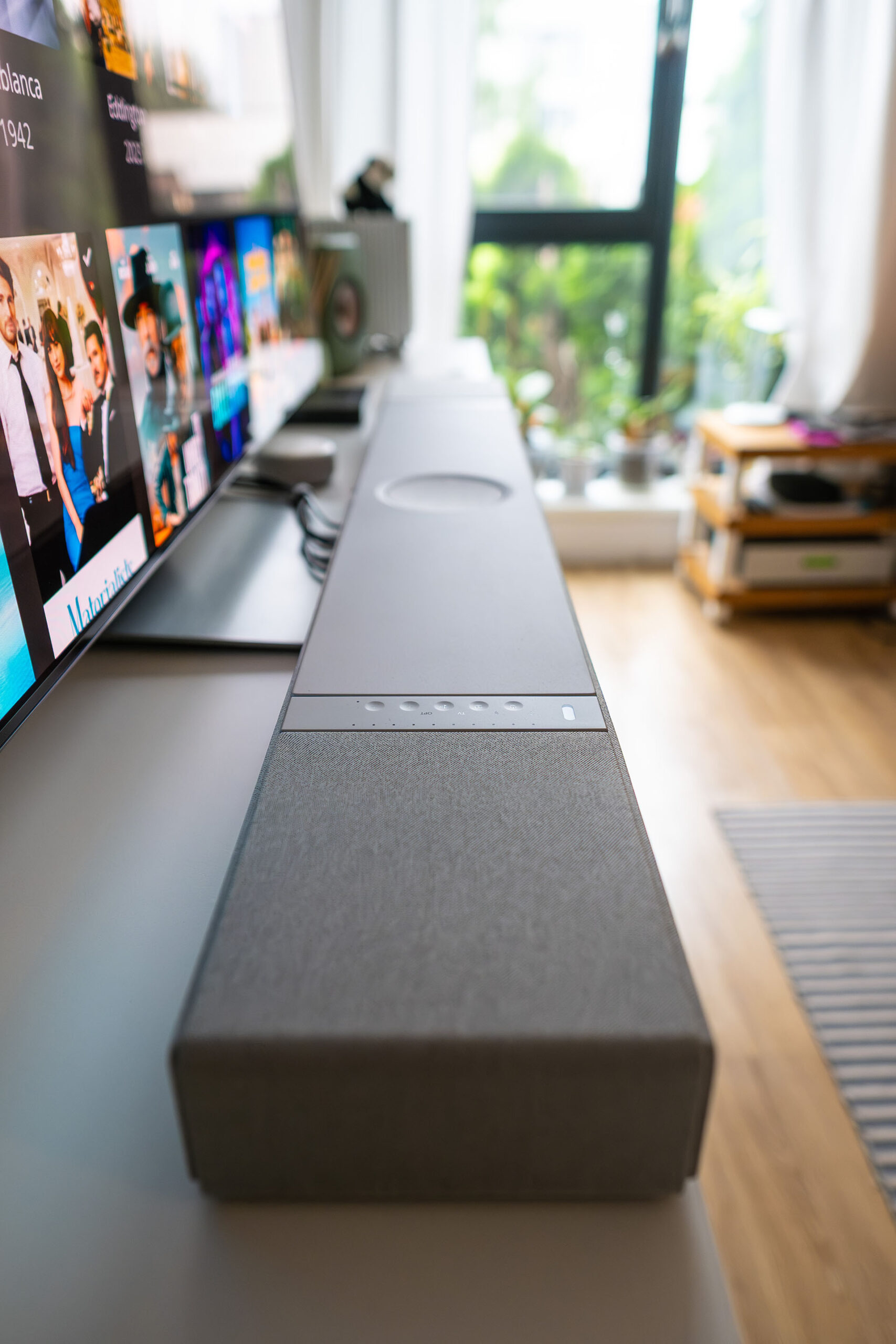
What I liked a lot and not so much
XIO is impressive due to the build quality and the design. I really like the textured fabric used by KEF on some of their speakers, and also used here on the soundbar. It lends the product an organic feel and facilitates a more seamless integration within any interior.
It is also impressive because of the extensive technology used and the large number of drivers and power amplifiers included. That said, I expected better DSP processing to leverage this hardware’s potential fully. The good news? All of this can still be improved through software updates, as the hardware is already in place. The minor sync issues arise from using HDMI eARC—not during playback, but for synchronizing the TV’s ON/OFF states, triggering the subwoofer to power up, and other minor inconsistencies.
There is also considerable potential untapped for the KEF ecosystem. I really hope this is on the way, because it can elevate true surround sound to a completely new level. This will bring a significant benefit to existing KEF users. That is why I am considering KEF XIO as the first step into something with a vast perspective. XIO alone is quite impressive and a step further from a TV-incorporated sound system or a stereo setup.
I did not understand the room correction, and there is also significant room for improvement in that area, especially if this becomes a fully integrated ecosystem. I would have liked to see the type of the decoded stream, possibly in the application if not displayed on the soundbar itself, to determine if XIO is utilizing surround sound decoding or if there is an issue causing it to fall back to the stereo PCM stream. I will find this very useful, just as TIDAL or Qobuz reports the streaming data sent to the sound system.
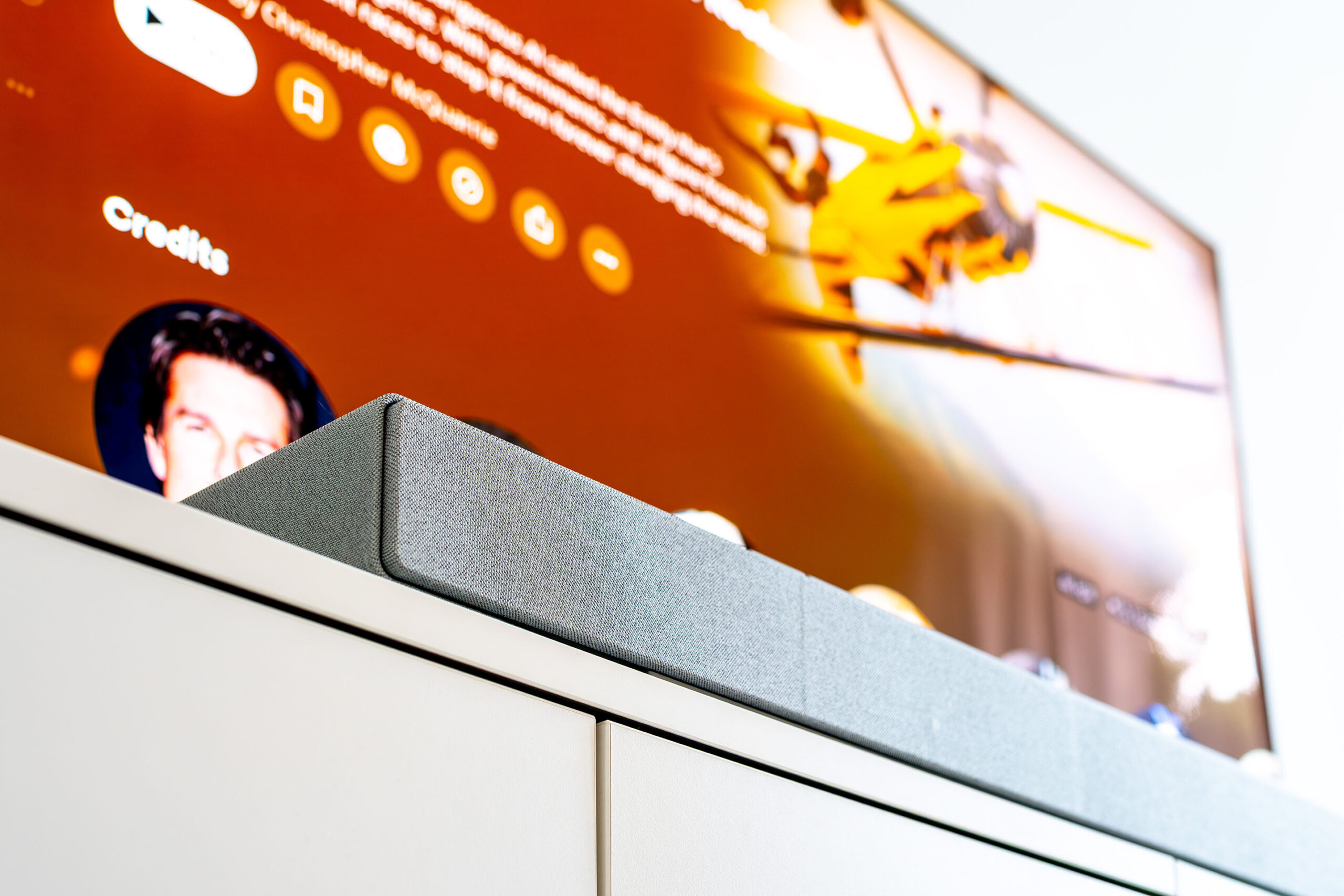
I liked the ease of use, as I am familiar with the application and have already used it with other KEF products. I also appreciated the overall KEF sound signature, although it can be improved through software updates or the introduction of other complementary speakers. I am convinced that KEF will iron out the minor issues with the eARC connection. Apart from that, the KEF XIO has the consistency of a premium product. There is a lot of competition in the price range (€ 2,299 in Europe), but KEF has started with the right foot, and this is very promising. Bass reproduction was good, and the intelligibility of the dialogue was beyond reproach. There are numerous amplification resources beyond the scene, which become apparent when the sound keeps pace with the action. There is an immediacy of sound and a scale that impressed me more than the surround special positioning. I can feel that missing now that the XIO returned to the shop.
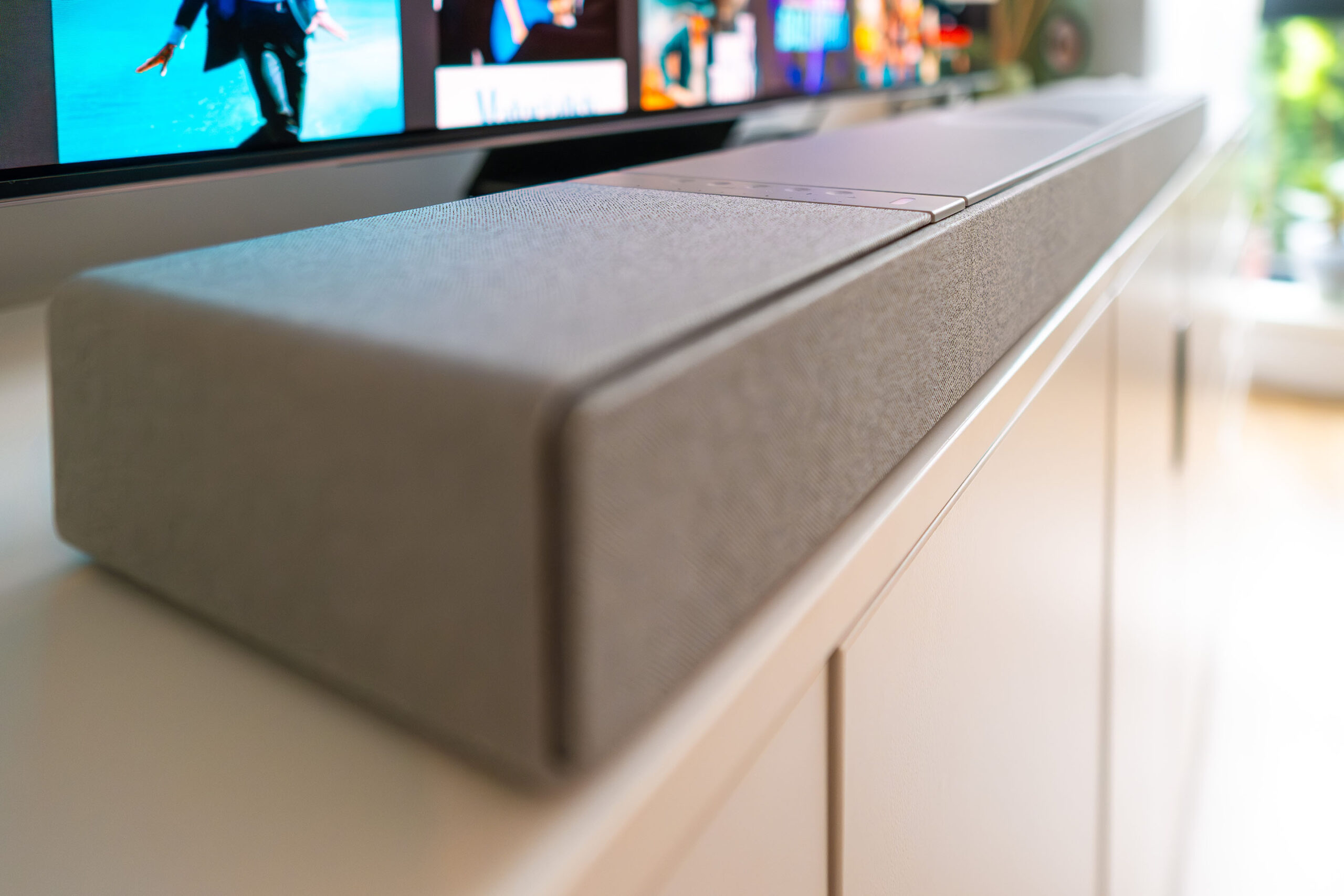
Sound Quality Conclusions
I feel that I need to clarify and conclude a bit. With all the minor issues that the next firmware update can easily address, a solid foundation of KEF sound is inherited in the XIO soundbar. There is no doubt that the same UniQ drivers are part of the whole presentation, contributing to the clarity and intelligibility of the dialogs. There is proper bass, even if a subwoofer is highly recommended, to achieve the impact required by the sound effects. The overall sound is big and deep, with strength and personality. The left and right spatial effects are extended nicely beyond the screen, and there is a lot of immersion and sound envelopment, even in a smaller room (like mine).
What I felt was missing was the spectacular pinpoint sound precision and positioning for which the Dolby sound is, in fact, all about. It was tough for XIO to work with my ceiling and the lateral walls to position the sounds or move them realistically, from front to back. The left-to-right effects worked quite well, but flying around above my head failed. That could be due to the small room dimensions or the lack of proper back drivers, as in a proper Dolby setup, which makes it difficult to pinpoint the exact issue. It is also possible to improve it in DSP and a little more aggressive room calibration based on the full range of the spectrum. Could all of this be solved by a software update, perhaps?
The base, the foundation, is good; the finishing is premium; the technology is there, already integrated. I can see how a little tweaking can transform a good product into a truly spectacular one. The sound signature adheres to KEF philosophy, which is a very good thing. There is plenty of power and momentum behind the drivers; I could not hear any distortion or excess from the drivers, even at deafening volumes. I’ve always had the sense that the DSP system is too conservative, holding back the sound so it doesn’t really fly around the room. This is not a critique per se, but the certainty that this spectacular hardware foundation could benefit further from KEF’s tremendous expertise in the digital domain.
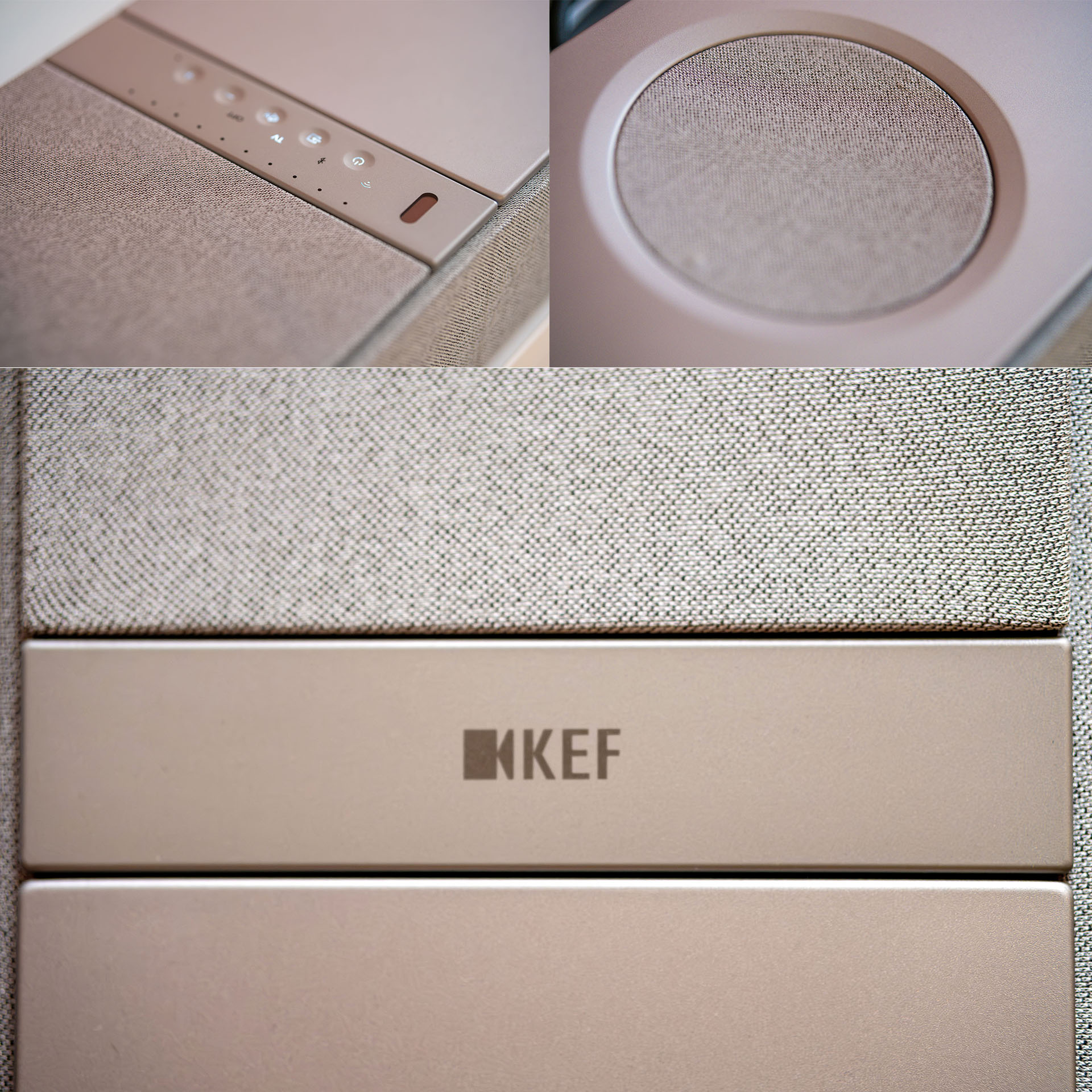
Last Word
First and foremost, I want to thank the local KEF distributor in Romania, AV Store, for their generosity and openness. They did not stress any upcoming review for letting me evaluate the KEF XIO, and not because they somehow knew I might not like it, which was not the case; rather, it was because it is a totally new product for KEF. It is not an uncharted territory as they are more than knowledgeable in the home theatre area, but trying to trickle down the expertise and technology is not an easy thing; sometimes it may be very, very hard. I appreciate AV Store’s honesty and support for this new product, as I didn’t have a lot of experience with soundbars. Ultimately, it is the foundation for what is about to come. It is definitely an investment for anyone, but I am confident that this is something to build upon, both for us as users and for KEF in building a new ecosystem. I am confident that, with a few key tricks and upcoming developments, XIO will become the brain and principal director of a fantastic home theater system.
The premium quality and design are on par with what KEF showed us before. Is it a premium product? Absolutely. Is it perfect? Of course not. However, what really engages me is the possibilities opened up by KEF XIO. Wouldn’t it be wonderful to build a vision for the feature out of it? A fantastic KEF ecosystem. So, get to work, KEF, and make the feature now!
I missed it, now that it is gone. If you followed me to this end, thank you! I learn along the way, and I hope you agree that this is the honest way of doing it right. Let’s hear only of the best!
